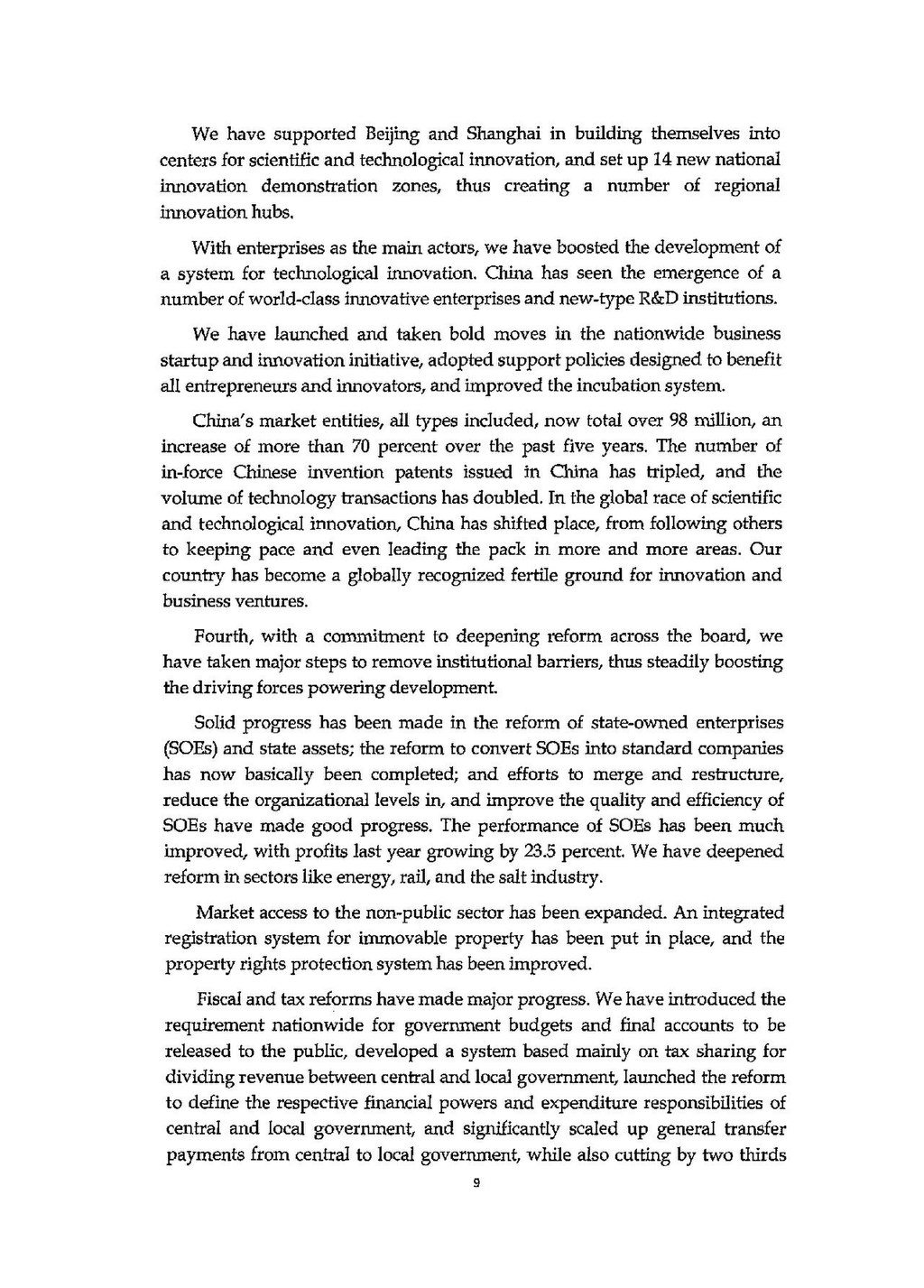We have supported Beijing and Shanghai in building themselves into centers for scientific and technological innovation, and set up 14 new national innovation demonstration zones, thus creating a number of regional innovation hubs.
With enterprises as the main actors, we have boosted the development of a system for technological innovation. China has seen the emergence of a number of world-class innovative enterprises and new-type R&D institutions.
We have launched and taken bold moves in the nationwide business startup and innovation initiative, adopted support policies designed to benefit all entrepreneurs and innovators, and improved the incubation system.
China's market entities, all types included, now total over 98 million, an increase of more than 70 percent over the past five years. The number of in-force Chinese invention patents issued in China has tripled, and the volume of technology transactions has doubled. In the global race of scientific and technological innovation, China has shifted place, from following others to keeping pace and even leading the pack in more and more areas. Our country has become a globally recognized fertile ground for innovation and business ventures.
Fourth, with a commitment to deepening reform across the board, we have taken major steps to remove institutional barriers, thus steadily boosting the driving forces powering development.
Solid progress has been made in the reform of state-owned enterprises (SOEs) and state assets; the reform to convert SOEs into standard companies has now basically been completed; and efforts to merge and restructure, reduce the organizational levels in, and improve the quality and efficiency of SOEs have made good progress. The performance of SOEs has been much improved, with profits last year growing by 23.5 percent. We have deepened reform in sectors like energy, rail, and the salt industry.
Market access to the non-public sector has been expanded. An integrated registration system for immovable property has been put in place, and the property rights protection system has been improved.
Fiscal and tax reforms have made major progress. We have introduced the requirement nationwide for government budgets and final accounts to be released to the public, developed a system based mainly on tax sharing for dividing revenue between central and local government, launched the reform to define the respective financial powers and expenditure responsibilities of central and local government, and significantly scaled up general transfer payments from central to local government, while also cutting by two thirds
9
